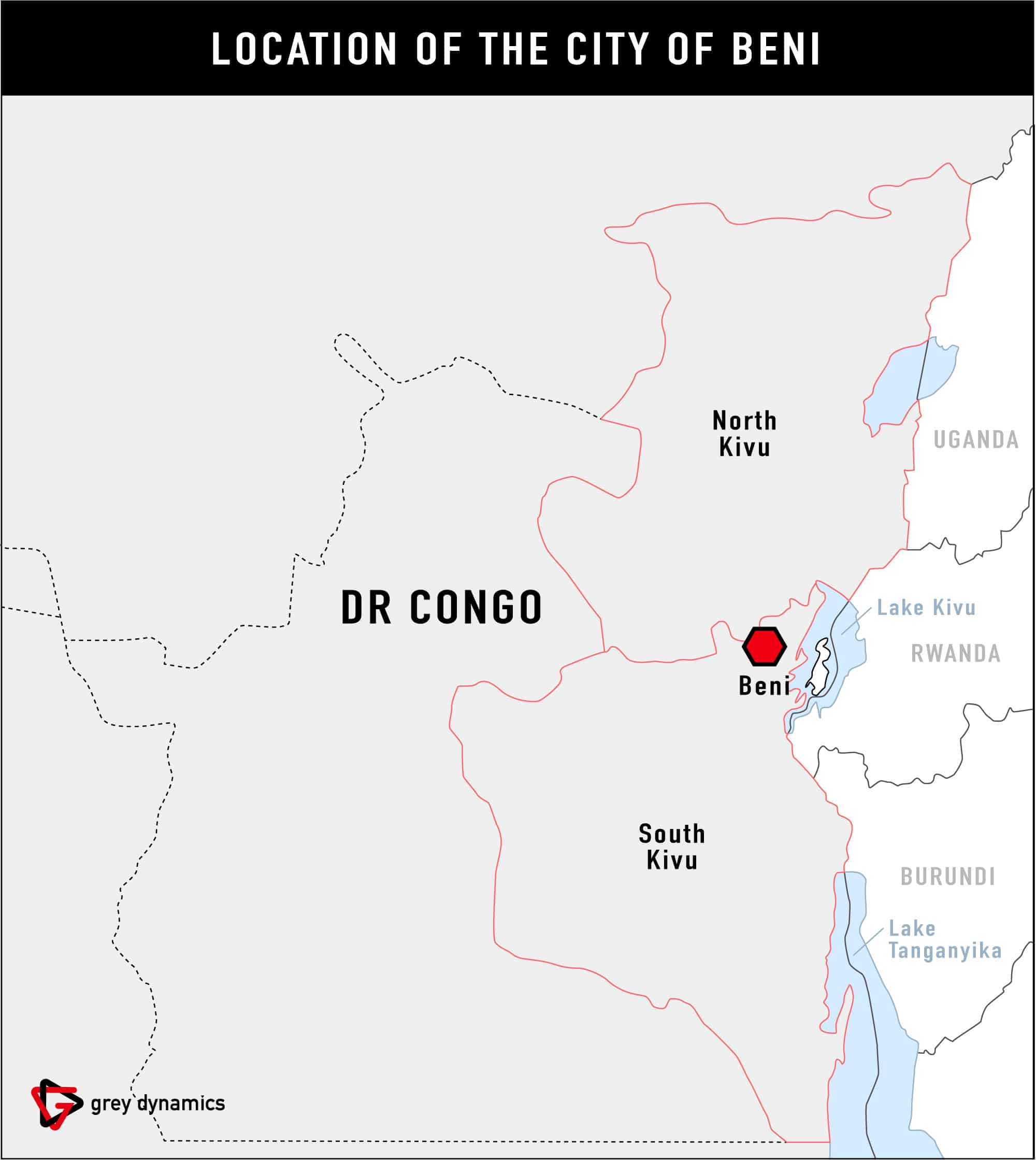
Background Islamic State & ADF
Unlike the Islamic State and its sub-branches, the Allied Democratic Forces (ADF) maintain a relatively low profile in the public eye. This aspect of the group’s nature brings more speculation than certainty regarding their contemporary ideological goals and ties with other organizations. Since its founding in 1995, ADF goals were historically focused on overthrowing the government of the incumbent Ugandan President Yoweri Museveni and converting it into a theocratic state aligned with the Salafist strain of Islam. ADF is currently active in the Democratic Republic of Congo (DRC) near the Ugandan border, in areas like the Rwenzori Mountains and the city of Beni.
Key Judgements Islamic State & ADF
KJ-1. There is a realistic probability that the ADF maintains some sort of financial connection to ISCAP, although not enough to classify them as a sub-branch of the latter.
KJ-2. It is highly likely the ADF and ISCAP share similar doctrinal beliefs in accordance with the Salafist school of Islamic thought. Furthermore, there is a realistic probability that the ADF does not use Salafism as the primary motivation for their activities, at least to the extent of ISCAP.
KJ-3. There is a realistic probability that the ADF and ISCAP are regional allies, but the extent of their relationship is unknown.

According to the Africa Center for Strategic Studies, “The ADF has taken on many faces ranging from Salafi-Jihadi to secular-nationalist, ethno-nationalist, and secessionist, with each aimed at different audiences and employed for different purposes.” Such a variation adds to the complexity of understanding the ADF, with reports of a possible link to the Islamic State’s Central Africa Province (ISCAP) raising questions about the ADF’s current ideological composure.
Financial Connection Islamic State & ADF
There is a realistic probability that the ADF & Islamic State maintainssome sort of financial connection, although not enough to classify them as a sub-branch of the latter. The most significant financial tie between the ADF & Islamic State is Waleed Ahmed Zein – a Kenyan financier of terrorism with links to the Islamic State and other Salafist jihad groups in Africa and the Middle East. According to a 2018 report from the Congo Research Group, Zein, who is now under sanctions from the U.S. Department of Treasury, gave financial support to the ADF at least one time according to Ugandan officials.
This is currently the only significant thread linking both groups which leaves room for uncertainty regarding the depth of their financial ties. Nonetheless, trends in Zein’s financial support are evidence that he primarily funds groups with a Salafist ideology. If the ADF received support from Zein, there is a realistic probability they share some sort of connection with ISCAP. It would not make sense for Zein to finance the ADF simply for their anti-government purposes.
Ideological Connection
It is highly likely the ADF & Islamic share similar doctrinal beliefs in accordance with the Salafist school of Islamic thought. Furthermore, there is a realistic probability that the ADF does not use Salafism as the primary motivation for their activities, at least to the extent of ISCAP. Recent ADF attacks in the DRC have all taken place within the vicinity of Beni, none of which having any overt religious motivation (or any motivation in general) behind them.
The ADF has not publicly claimed their recent attacks, leaving witnesses and national military forces to report their presence – this is likely due to their tendency to be illusive and not rely on a heavy use of propaganda. ISCAP attacks are historically motivated by their deeply rooted ideology and are followed with some sort of media acknowledgement (which can also be a false claim for propaganda purposes).
On the 28th of December 2020, ISCAP attacked DRC military positions in the village of Loselose near Beni. Following the attack and occupation of the village (which was stopped by the Congolese Army three days later), a ISCAP propaganda video shows a combatant speaking Kiswahili saying “We are happy to have attacked the second garrison of the infidels we encountered in the village of Loselose. They all fled and now we are burning the village.”
The inclusion of jihadi language can be contrasted to the ADF’s cloud of silence and deception with public displays of ideology. Nonetheless, the ADF does have a historical tie to the Salafi movement and imposes such ideals within the hierarchy of its organization. This attack also demonstrates the ADF has a civil tolerance of ISCAP operating within their AO. Furthermore, that does make it likely that the groups have some sort of line of communication, the extent of which is currently unverifiable.
Network Connection
There is a realistic probability that the ADF and ISCAP are regional allies, but the extent of their relationship is unknown. The history of regional attacks does demonstrate a presence of both groups operating within the same region of the DRC, albeit none demonstrate any sort of fighting between the ADF and ISCAP. If there was a struggle for territory or power between groups, it is likely there would be some sort of evidence. Nonetheless, it is unlikely that the ADF is a sub-branch of ISCAP. All Islamic State franchises are heavily linked to the IS central command, including ideologically, financially, and publicly.
As mentioned in this Grey Dynamics article, the fracturing of Boko Haram into the Islamic State’s West African Province damaged ties between the groups, but a loose relationship still remained. This example demonstrates how IS operates its franchises in a specific way, one that the ADF does not currently uphold. Likewise, that also presents a realistic probability that the lower ranking tiers of each group share a closer relationship than fraternization between the command elements.
Image: Hum Angle (link)
